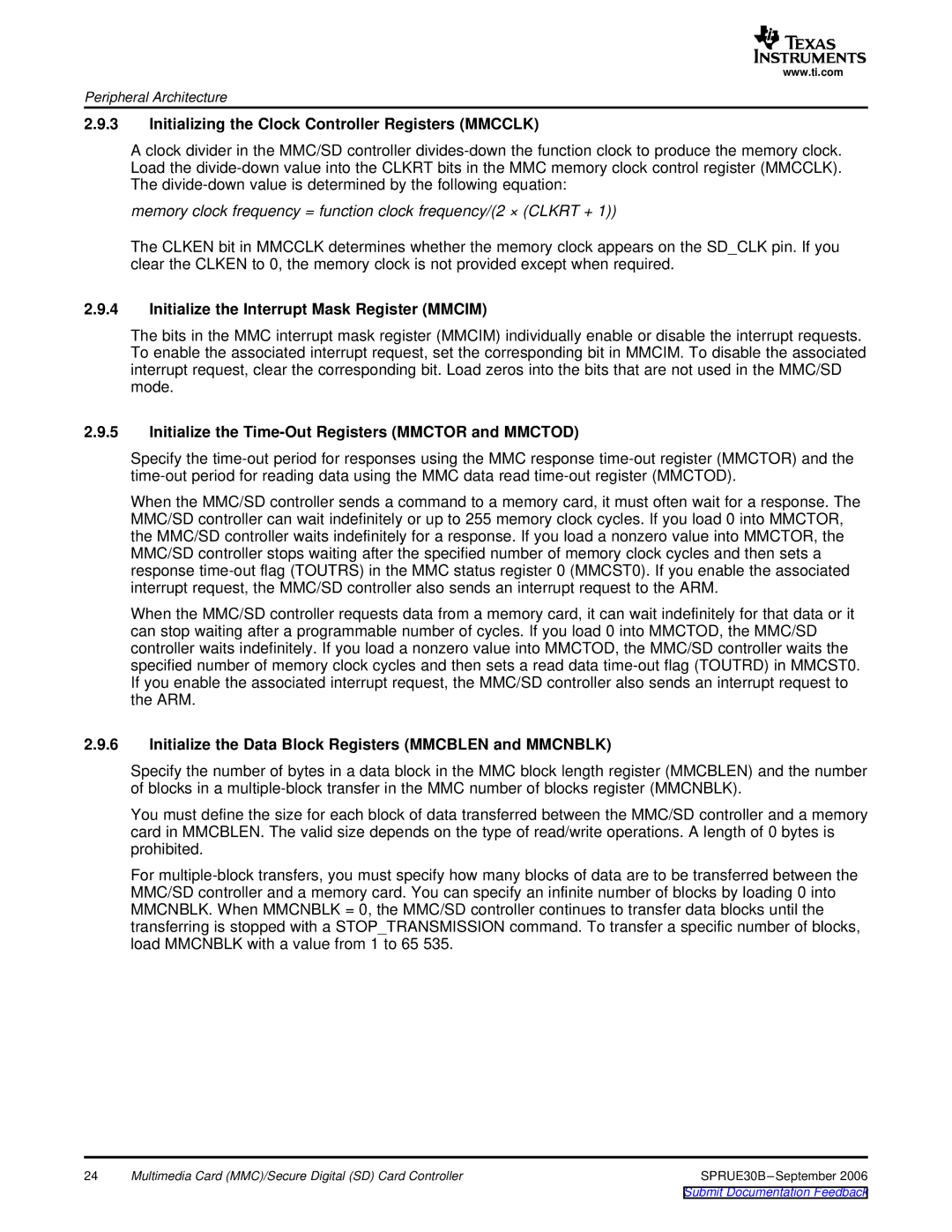
www.ti.com
Peripheral Architecture
2.9.3Initializing the Clock Controller Registers (MMCCLK)
A clock divider in the MMC/SD controller
memory clock frequency = function clock frequency/(2 × (CLKRT + 1))
The CLKEN bit in MMCCLK determines whether the memory clock appears on the SD_CLK pin. If you clear the CLKEN to 0, the memory clock is not provided except when required.
2.9.4Initialize the Interrupt Mask Register (MMCIM)
The bits in the MMC interrupt mask register (MMCIM) individually enable or disable the interrupt requests. To enable the associated interrupt request, set the corresponding bit in MMCIM. To disable the associated interrupt request, clear the corresponding bit. Load zeros into the bits that are not used in the MMC/SD mode.
2.9.5Initialize the Time-Out Registers (MMCTOR and MMCTOD)
Specify the
When the MMC/SD controller sends a command to a memory card, it must often wait for a response. The MMC/SD controller can wait indefinitely or up to 255 memory clock cycles. If you load 0 into MMCTOR, the MMC/SD controller waits indefinitely for a response. If you load a nonzero value into MMCTOR, the MMC/SD controller stops waiting after the specified number of memory clock cycles and then sets a response
When the MMC/SD controller requests data from a memory card, it can wait indefinitely for that data or it can stop waiting after a programmable number of cycles. If you load 0 into MMCTOD, the MMC/SD controller waits indefinitely. If you load a nonzero value into MMCTOD, the MMC/SD controller waits the specified number of memory clock cycles and then sets a read data
2.9.6Initialize the Data Block Registers (MMCBLEN and MMCNBLK)
Specify the number of bytes in a data block in the MMC block length register (MMCBLEN) and the number of blocks in a
You must define the size for each block of data transferred between the MMC/SD controller and a memory card in MMCBLEN. The valid size depends on the type of read/write operations. A length of 0 bytes is prohibited.
For
24 | Multimedia Card (MMC)/Secure Digital (SD) Card Controller | SPRUE30B |
